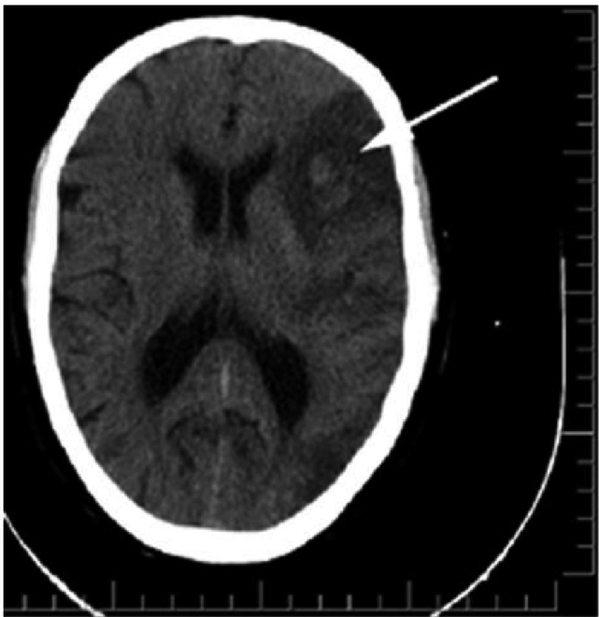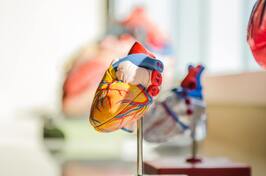Investigating the Link Between COVID-19 and Stroke Cases
As of January 18th, 2022, the coronavirus SARS-CoV-2 (severe acute respiratory syndrome coronavirus 2), which causes coronavirus disease 2019 (COVID-19), has infected over 330 million people worldwide and has caused over 5 million deaths, according to Worldometer. COVID-19 is well known for causing various respiratory symptoms such as pneumonia—an infection of the lungs—and acute respiratory distress syndrome (ARDS), an injury of the lungs that causes difficulty breathing. However, a January 2021 review by researchers at the University of Udine Medical School in Italy explains how COVID-19 patients also face a risk of stroke—a condition that occurs when the blood supply to the brain is interrupted or reduced, often resulting in permanent tissue damage.
Studies examined in their review found that about 1–3% of hospitalized COVID-19 patients and 6% of those in the intensive care unit were affected by a stroke. The neurological (brain-related) damage from these strokes was typically severe. About 25% of cases involved systemic thrombosis, which occurs when blood clots (solidified blood meant to prevent bleeding) block blood vessels throughout the entire body. Additionally, many patients were susceptible to ischemic stroke, which involves the blockage or narrowing of an artery leading to the brain by a blood clot. More specifically, they were commonly affected by large vessel occlusion, which is an ischemic stroke on a major artery.
Studies examined in their review found that about 1–3% of hospitalized COVID-19 patients and 6% of those in the intensive care unit were affected by a stroke. The neurological (brain-related) damage from these strokes was typically severe. About 25% of cases involved systemic thrombosis, which occurs when blood clots (solidified blood meant to prevent bleeding) block blood vessels throughout the entire body. Additionally, many patients were susceptible to ischemic stroke, which involves the blockage or narrowing of an artery leading to the brain by a blood clot. More specifically, they were commonly affected by large vessel occlusion, which is an ischemic stroke on a major artery.
Image Source: Brain CT scan at admission by Masoud Mehrpour is licensed under CC by-NC 3.0
These patients had a median age of 63 years, and most also had underlying risk factors such as hypertension (high blood pressure) and diabetes. However, there were also instances in which those younger than 50 years old and without underlying risk factors suffered a stroke. These individuals generally had a stroke before the onset of COVID-19 symptoms, unlike those in the older group of patients. While in the older group of patients COVID-19 is simply regarded as a stroke trigger, in the younger and healthier group it is thought that COVID-19 plays a major role in causing a stroke.
Furthermore, the review found that the structure of the virus that causes the COVID-19 disease, SARS-CoV-2, significantly increased the patients’ risk of stroke. SARS-CoV-2 uses its spike protein to enter cells and subsequently infect them. When it attaches to an enzyme called ACE2 (which produces small proteins and is found on the surface of many cell types), ACE2 activity decreases because it is structurally damaged by the spike protein. This leads to higher levels of the protein angiotensin II, which is responsible for increases in blood pressure and the retainment of sodium and water in the kidneys. This subsequently causes inflammation and clotting in blood vessels, which could be responsible for blockage of necessary blood flow to the brain. Additionally, increased levels of immune proteins called cytokines, which can destroy tissue, are released. These proteins allow for weakened vessel walls and can potentially lead to blood leakage through a split in the vessel, known as a dissection.
Possibly as a result of these mechanisms, the effects of contracting COVID-19 may be amplified. In a study at the General University Hospital of Albacete in Spain, 73.9% of sampled COVID-19 cases with cerebrovascular disease had a significantly unfavorable prognosis. Moreover, in two studies from Italy (in the European Journal of Neurology) and the United States (in the journal Stroke), the outcomes among COVID-19 patients who suffered a stroke were poorer than those for stroke patients who didn’t have COVID-19.
Often, the general public focuses on the short-term effects of COVID-19. However, the possible neurological dangers correlated with contracting COVID-19, as described in the review, demonstrate the need to be more mindful of the long-term effects of the disease.
Furthermore, the review found that the structure of the virus that causes the COVID-19 disease, SARS-CoV-2, significantly increased the patients’ risk of stroke. SARS-CoV-2 uses its spike protein to enter cells and subsequently infect them. When it attaches to an enzyme called ACE2 (which produces small proteins and is found on the surface of many cell types), ACE2 activity decreases because it is structurally damaged by the spike protein. This leads to higher levels of the protein angiotensin II, which is responsible for increases in blood pressure and the retainment of sodium and water in the kidneys. This subsequently causes inflammation and clotting in blood vessels, which could be responsible for blockage of necessary blood flow to the brain. Additionally, increased levels of immune proteins called cytokines, which can destroy tissue, are released. These proteins allow for weakened vessel walls and can potentially lead to blood leakage through a split in the vessel, known as a dissection.
Possibly as a result of these mechanisms, the effects of contracting COVID-19 may be amplified. In a study at the General University Hospital of Albacete in Spain, 73.9% of sampled COVID-19 cases with cerebrovascular disease had a significantly unfavorable prognosis. Moreover, in two studies from Italy (in the European Journal of Neurology) and the United States (in the journal Stroke), the outcomes among COVID-19 patients who suffered a stroke were poorer than those for stroke patients who didn’t have COVID-19.
Often, the general public focuses on the short-term effects of COVID-19. However, the possible neurological dangers correlated with contracting COVID-19, as described in the review, demonstrate the need to be more mindful of the long-term effects of the disease.
Featured Image Source: geralt
RELATED ARTICLES
|
Vertical Divider
|
Vertical Divider
|
Vertical Divider
|






